The Evil Magician Zirroz has a predilection for precious gems and a penchant for not paying.
One night, while all but a few of the kingdom’s denizens are slumbering in their beds, Zirroz wraps the castle in an enchantment and begins floating the crown jewels one by one through the castle gates in an effort to pilfer them. If he isn’t stopped, he’ll bankrupt the kingdom, leaving its citizens broke and defenseless.
Fortunately for them, a small band of plucky upstarts stayed up past their bedtime. When they shirked their sacktime, none of them expected to be heroes, but here they are. Seeing what the Evil Magician is doing, they feel compelled to step in and do something about it. So, hiding themselves in the bushes, they begin plucking the precious bijous out of the air and replacing them with colored stones.
Maybe Zirroz won’t notice. Hopefully.
Overview
In Midnight Castle one to four players take on the roles of the heroic townspeople trying to save as many jewels as possible. As the game opens, a line of floating gems has already made it out of the castle, so the players are put into the position of having to play catch up. Every player begins with a small collection of stones and they use these to move to the colored locations of the center path and then to pluck the jewels from the air before replacing them.
After the endgame is triggered, the players count up the points from their collected stones and the player with the most points wins.
How to Play
The gameboard features a cardboard castle sitting at the head of a long pathway, which extends from the castle gates. Inside the castle is a stack of randomly shuffled tiles. The topsides of these tiles feature one to three gems in one of the game’s colors—red, green, or yellow. As tiles are collected, they are flipped over to see what instructions (if any) are shown on their undersides. These instructions are: push one to several tiles out of the castle, take an extra turn, or nothing at all.
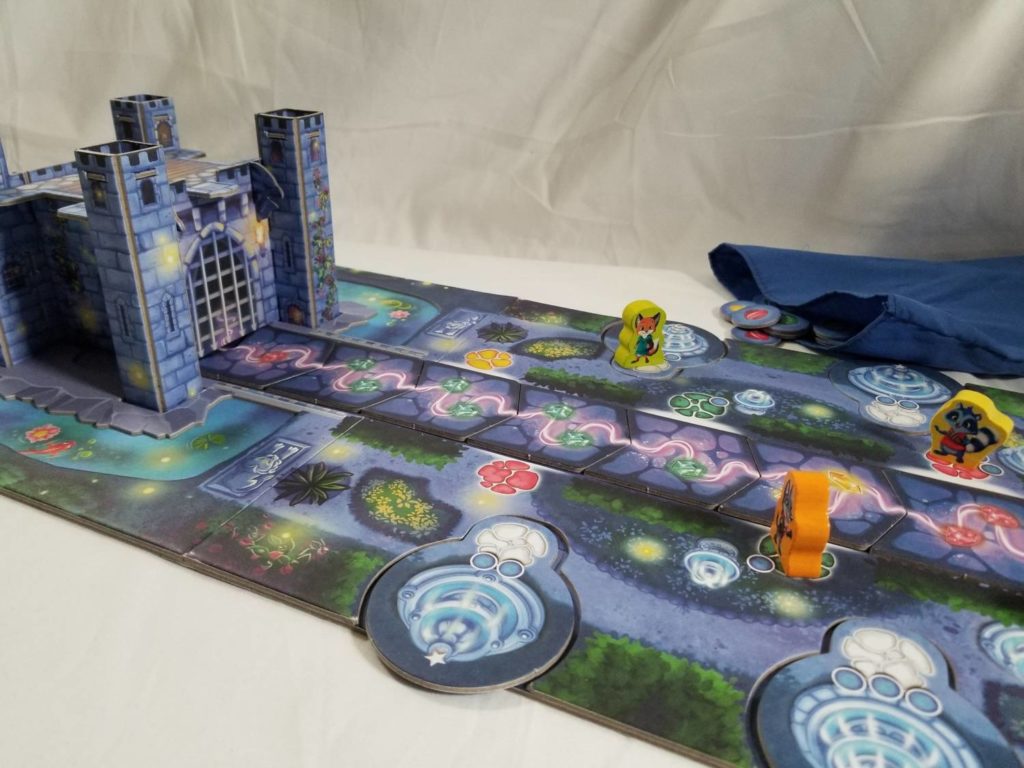
The tile pushing action is governed by a piece of flat plastic with a notch in which the Evil Magician Zirroz sits. Pushing this plastic piece into the castle forces one of the tiles from the stack out of the other side. I’ve played a lot of games in my lifetime and this is, hands down, one of the coolest gimmicks I have ever experienced. Very thematic and so much fun!
To either side of the central path where the tiles are situated are several groups of spots for players to place their pawns. Some of these sit alongside the central path. Others are covered with Fountain tiles. On a player’s turn, they move their pawn to a new spot by paying a stone that matches the color of the spot. Or, in the case of the Fountain, they pay nothing at all and simply move their pawn to that location. If another player’s pawn is in the desired spot, then the current player cannot move there.
Skills For Life: Reading the paragraph above, you might be thinking it sounds an awful lot like worker placement. That’s because it is! Playing Moonlight Castle with your young’uns is setting them up for future adventures with games such as Caverna: the Cave Farmers.
Once a player moves their pawn to the new location, they have a few options available to them, depending on the location. Fountains are the easiest. Going to a Fountain will allow a player to draw two or three stones from the bag to add to the pile hidden behind their player screens. If moving to one of the other locations, the player may have the opportunity to draw one or two stones from the bag before interacting with the jewel tile that is situated next to the space (if there is one).
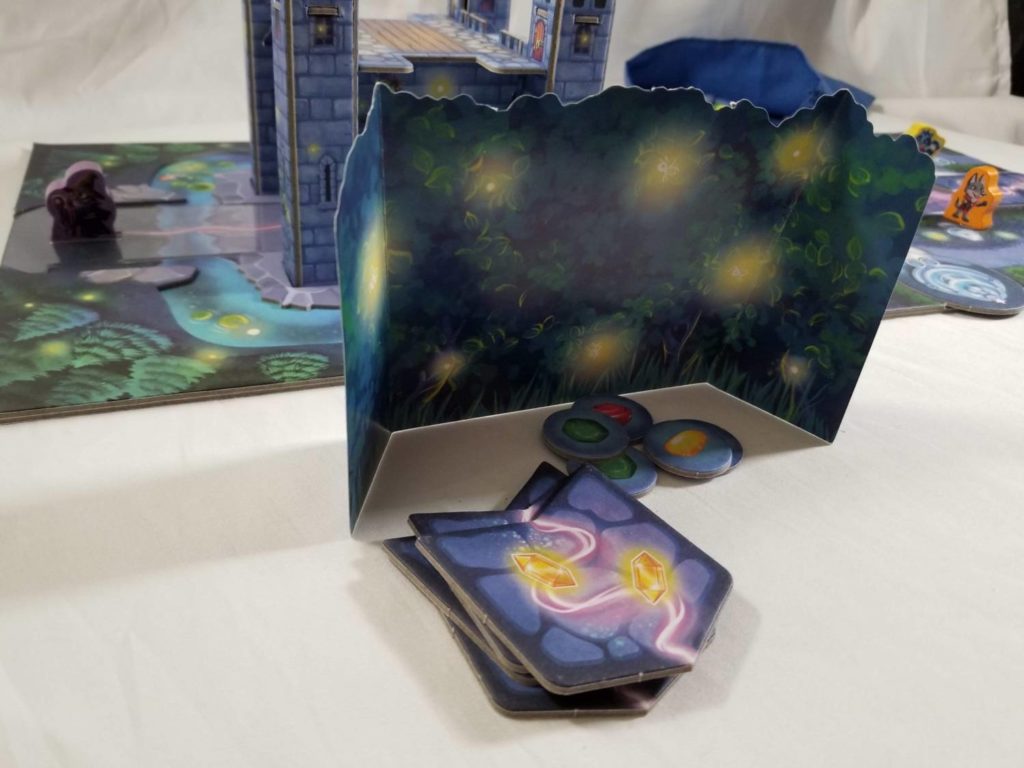
Simply pay a number and type of stones equal to whatever’s featured on the tile and then collect it. So, if you want to move to a red space to pick up a jewel tile with two yellow jewels on it, you’d pay a red stone to move to the space and then two yellow stones to pick up the tile. Then you would flip the tile to its opposite side and carry out the instructions shown there.
Carrying out these instructions may cause the jewel tiles to shift (this is often the case). That’s great when the newly moved jewel tiles happen to line up with the stones you have hidden behind your screen. But more often than not, this tile movement is disastrous, forcing you to have to pivot and go for something else.
Skills For Life: Planning ahead is one thing, but having to quickly pivot as information changes is another. If your children are able to master this skill set, then they’ll become a valuable member of your team as you work with them to wipe out the threats in your future games of Pandemic.
Once all the tiles have been pushed out of the castle, the end game is triggered. The current round is finished. Then the game comes to an end and the players count up the jewels they’ve collected to determine the winner.
Thoughts
It was October of 2022.
With Christmas mere months away, my wife and I decided it was time to start Christmas shopping for our son. With what was likely to be a tight Christmas budget, we hatched a plan to gather up his gifts over time instead of one lump sum closer to Christmastime. And first on that shopping list was a new board game. But which one?
Hunting around on Amazon, we came across several tantalizing possibilities, games like Barnyard Bunch, Hedgehog Haberdash, and Critter Cruise. Ultimately, though, we settled on two: the award-winning Dragon’s Breath and the subject of this review: Moonlight Castle.
And let me tell you, I couldn’t wait for him to unwrap it. As eager as I was to see the joy on his face as the wrapping paper fell away and the treasure inside was revealed, I was even more eager to get it to the table. I’ve played a lot of kid’s games with my son over the past few years, but this was the first time that I found myself legitimately excited to play one of them. And I don’t mean I was just excited because it meant another opportunity to play a game with my son, a prospect which I am always looking forward to. I was excited about the game itself.
Moonlight Castle is a delight to behold. From the classic HABA yellow (a shade of yellow which I’m pretty sure is scientifically enhanced to put a smile on your face) to the bold, colorful imagery on the box cover, everything about the game’s packaging is designed to make you want to rip into it immediately. After opening the box, the hits keep coming. The cardboard components are nice and chunky and beautifully illustrated. The 3D castle (you heard that right) is UH-MAZ-ING. The little wooden characters are cheeky and fun. And that tile-sliding mechanism is fantastic.
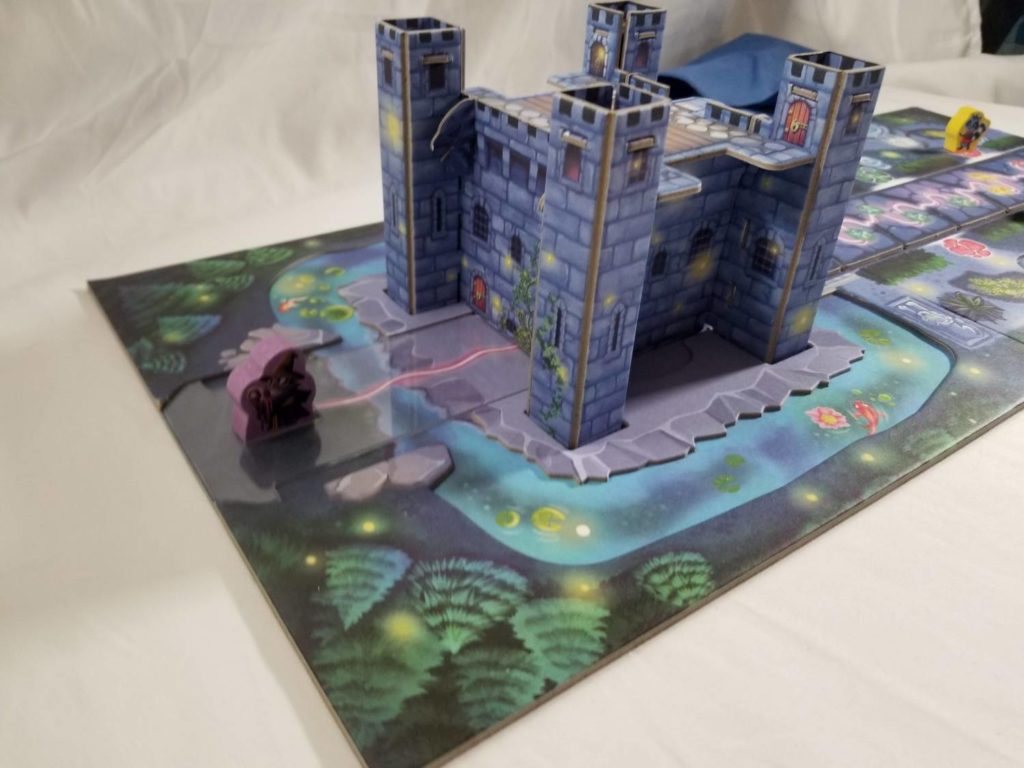
The gameplay is pretty stellar, too, for a kid’s game. There’s nothing about Moonlight Castle that’s going to cause your brain to melt with crippling analysis paralysis, but that doesn’t mean it’s devoid of strategy. You can clearly see the jewel tiles on the path. Having that peek as to what’s coming up allows you to prepare as best as you can, assuming the bag draw works out in your favor.
The bag draw simultaneously provides some of the game’s highest and lowest moments. In any game where your success is predicated on a run of good luck, it’s always a bummer when your luck turns bad. The bag draw in Moonlight Castle is no exception. Having a long line of red jewel tiles sitting there waiting to be plucked and drawing nothing but yellow and green stones can be frustrating. Fortunately, the game’s pacing is fast enough that opportunities to turn your luck around come at you fairly quickly.
Sometimes the bag draw can be exciting. There was one game where there was a three yellow jewel tile next to a red ‘draw two stones’ space. Looking at my available stones, I realized that I had a red stone and two yellows. I reasoned that if I spent my red to go to that space, I could then draw two stones from the bag and potentially gather the yellow stone that I needed to grab the three yellow jewel tile. So I spent the red and moved. I reached into the bag and… no dice. I’d pulled a green. So, fingers crossed, I delved back into the bag, grasped a token with my fingers, and saying a little prayer under my breath drew my stone from the bag.
To say that moments like these abound would be overselling it. But they do happen with a great degree of frequency and it’s always exciting when they do. Even though my son wasn’t directly affected by my bag draw, he was still on the edge of his seat in anticipation of what I’d draw. My wife seemed pretty into it, too.
I thoroughly enjoy this game and it brings me much joy to see my four year old taking such an interest in my hobby. And it lifts my spirit to see his tastes beginning to shift away from silly games like Catch Me! to games that require more brain power. It’s a clear sign that he’s growing and getting smarter with each and every day.
And it’s a clear sign that bigger and better games are on the horizon.


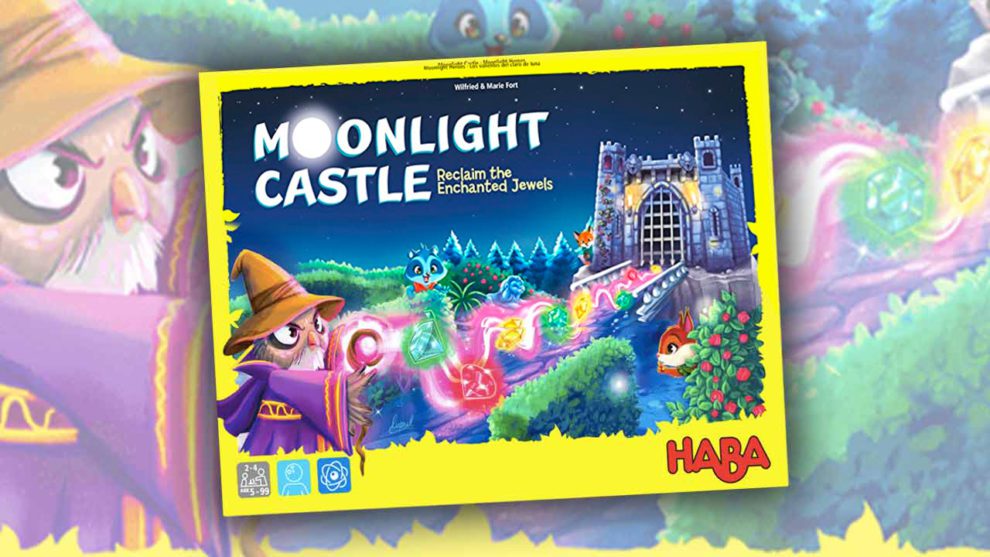



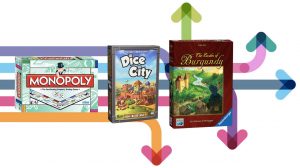





Add Comment